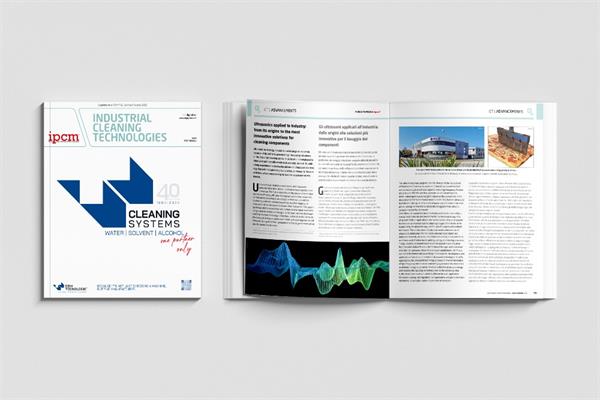
The new issue of the magazine dedicated to covering all aspects of industrial parts cleaning is available!
The industrial part cleaning sector has undergone a significant transformation in recent years, driven by a growing need for high-precision and ultra-fine cleaning processes. It is no longer just a case of removing visible, coarse contaminants but of achieving ever-higher levels of surface purity – in sectors such as aerospace, medical, and advanced electronics, but also in emerging industries such as electric mobility, and even in fields previously satisfied with a cleanliness degree that was perfectly adequate for the intended use of products but certainly lower than required today. The market polarisation is imposing new challenges on manufacturers of cleaning machines and systems, which, at the same time, must deal with the ever-evolving sustainability concept, now understood in a broader sense than in the past.
For a long time, when sustainability was still referred to with the phrase ‘low environmental impact’, there has been a widespread belief that water-based detergents were the only industrial cleaning technology worthy of being defined as sustainable. This marketing strategy caused misunderstandings and even damaged the sector’s image, as it led to solutions that were not always effective from a technical and economic point of view, not being tailored to the cleaning requirements at hand but rather guided by an a priori choice.
Today, sustainability means implementing the most appropriate cleaning solution for every component type, the upstream and downstream production processes, and the intended use of parts. New generation solvents developed to guarantee high performance with the lowest environmental impact, the lowest toxicity, and the highest operational safety possible have become widespread, replacing the old ozone-destructive, toxic, teratogenic, or carcinogenic solvents. The challenge is to balance efficiency, safety, and environmental impact reduction in a broader context.
Adopting a holistic approach to sustainability calls for analysing every process phase from the selection of raw materials to the management of the end-of-life of the products used. That also entails assessing the entire life cycle of cleaning solutions with a vision that integrates aspects such as energy consumption, CO2 emissions, resource consumption, and operator safety. The all-round approach not only improves competitiveness but also responds to increasingly stringent regulatory and market demands.
In this context, the Industry 5.0 paradigm brings a further level of complexity and innovation. Whereas Industry 4.0 introduced digitalisation, automation, and interconnection, this new phase focuses on a greater harmonisation between man, technology, and sustainability. This means not only making industrial cleaning processes more intelligent and interconnected but also designing systems and solutions that can dynamically adapt to production needs, minimising waste and optimising the use of resources. The future of the industrial cleaning sector will not be determined by one technology or solution but by the ability of companies to integrate innovation, sustainability, and flexibility in an increasingly complex production ecosystem. The challenge is on: whoever can rise to it will have a decisive competitive advantage in tomorrow’s markets.
READ THE MAGAZINE!